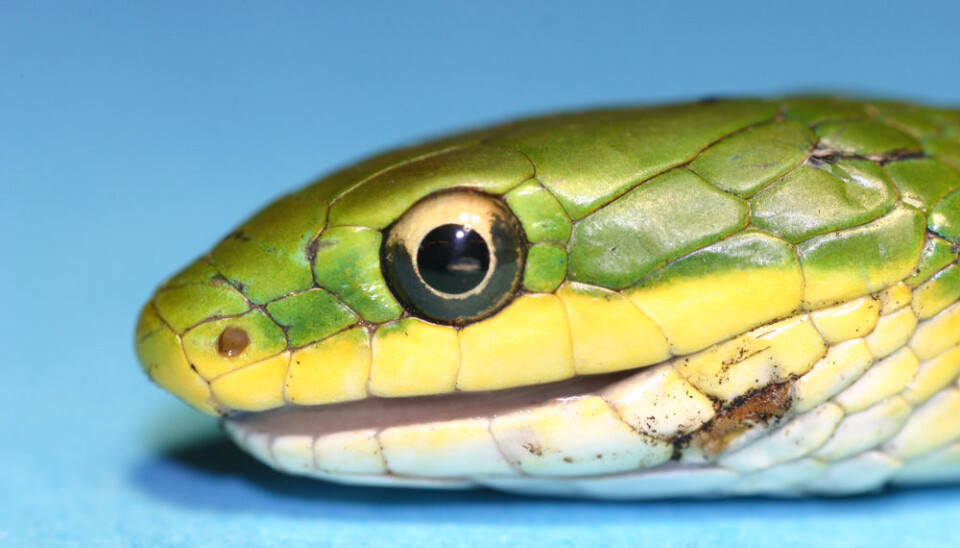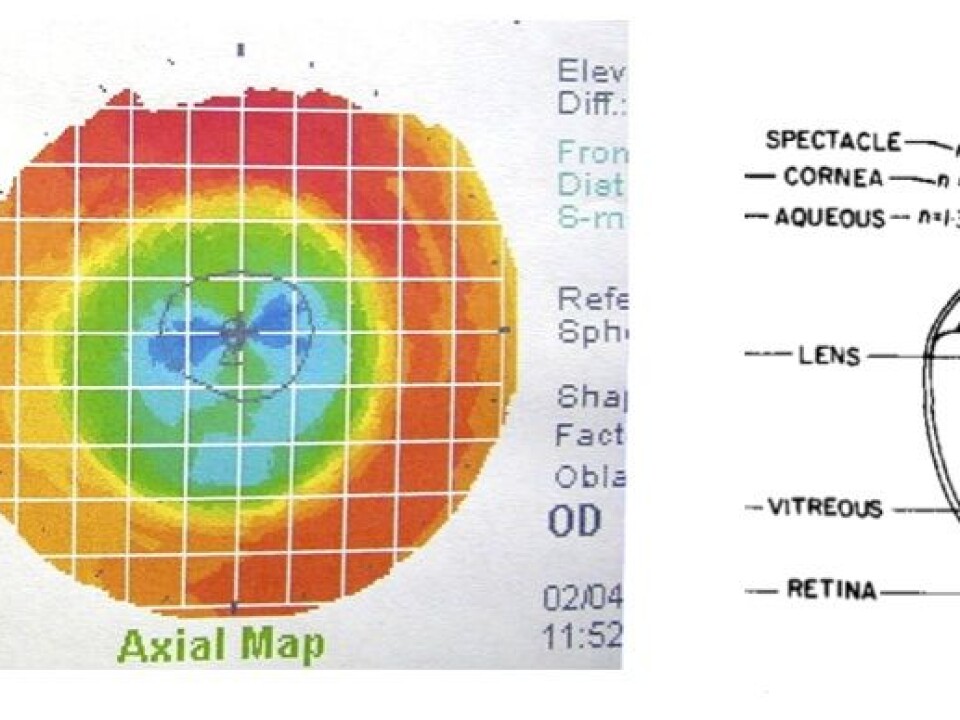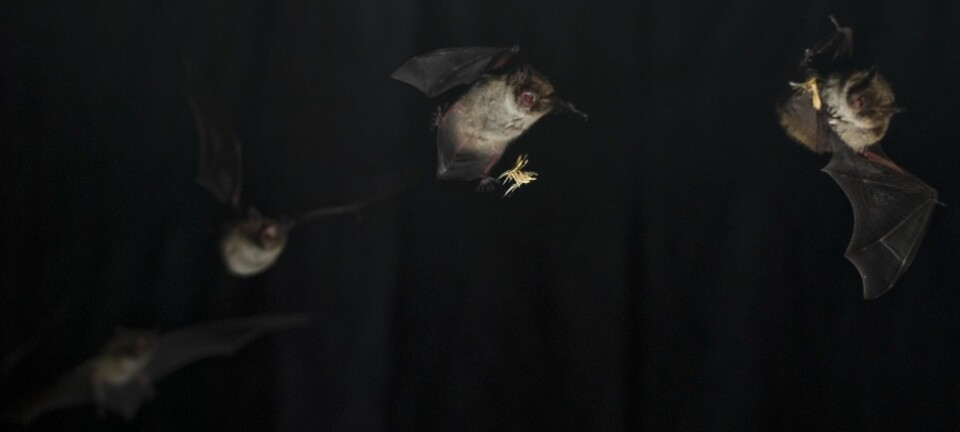
Snakes' eyes could give us super eyesight
A new study of snakes’ eyes will inspire researchers to develop a new type of contact lens that can repair itself as well as provide users with optimal vision
Tiny, scowling and spooky.
Snakes eyes seem repugnant to most people, but in fact they have some very special characteristics that make them rather enviable.
Snakes have abandoned eyelids in favour of a thin, clear membrane covering their cornea, which functions like a self-repairing contact lens. Not only does the membrane refract light, it is also replaced from time to time so that scratches on the eye disappear.
The characteristics of the snake's eye so impressed a group of Danish scientists that they initiated a research project to investigate the membrane and understand how it works. They hope ultimately to develop an entirely new, ground breaking type of contact lens that could give humans super eyesight.
Contact lenses provide good eyesight in the swimming pool

The initiative was taken by an eye pathologist from Copenhagen University, a biologist from Aarhus University and a veterinary surgeon from the Copenhagen Zoo.
"The study will not only tell us more about the snakes, it will also provide inspiration for the development of a contact lens that can give us optimal eyesight in any imaginable situation, whether we are skiing, sitting at a computer or at the swimming pool," explains the head of the project, Professor Steffen Heegaard, of the Eye Pathology Section at Copenhagen University and a specialist at the Glostrup University Hospital's Eye Department.
Eye membrane replaces itself
Snakes have developed a thin membrane on the outside of the eye to compensate for their lack of limbs.
When a snake wriggles its way through the forest floor or pushes its way through thick undergrowth, it is more than likely to get a grain of sand or a sharp twig in its eye because it has no means of defending itself or even clear a path. And if it gets something in its eye, it cannot fish it out and the eye will end up scratched.
The snake's eye membrane and our contact lenses are practically identical; in both cases you have a lens on the outside of the cornea.
"The cornea is extremely sensitive but the clear membrane on the outside of the cornea provides good protection, and parts of it are even replaced when the reptile sheds its skin. Shedding the skin is very clever as it enables the snake to shake off damage caused by sand, gravel and branches," says Heegaard.
Ingenuously, the thin membrane does not lie directly on top of the cornea, but is separated from it by a thin layer of fluid which moistens the eye.
"That can also teach us something," says veterinary surgeon Mads F. Bertelsen from the Copenhagen Zoo, who is also involved in the project. "One of the problems with contact lenses is that the eye immediately beneath the lens dries out, a problem which has been solved in the snake's eye by means of the thin layer of fluid. It may be possible to develop a contact lens that is permeable to tears so as to avoid drying out."
Contact lens will correct the image
The membrane not only protects the eye, it also helps create the image seen by the snake. Thanks to its construction, the membrane refracts the light that enters in the same way as our contact lenses do.
"This has led us to ask whether it is possible to construct the upper layer of the contact lens so that it can be replaced in a manner inspired by the snake shedding its skin," Heegaard continues.
We humans could benefit from this kind of contact lens, since nature has not equipped us with the best vision on the planet. The image the eye itself is able to generate is pretty good, although it is impaired by the cornea, which is not an ideal optic. This means that the image appears less sharp.
"We envisage developing a contact lens that can correct the indistinct image of the cornea, thus improving our visual acuity to give us super eyesight," says Heegaard.
Research foundation is interested
New contact lens technology would be welcome indeed as developments in the field have been very slow since the first lenses came on the market in the early 1960s. This project may make up for sorely missed progress.
It is by no means certain that this project will result in a new contact lens but if it does, it will be a great step forward.
"The Synoptik Foundation [a Danish foundation which sponsors research and development in the fields of optics, optometry and ophthalmology] sees tremendous potential in our project and is willing to support us if we can point the way to a new technology for contact lenses," says another of the principal organisers, Professor Tobias Wang of the Institute of Biology at Aarhus University.
If the researchers do not succeed in developing a new contact lens technology the money spent will not have been wasted because the studies will give scientists an insight into an area which by and large represents undiscovered territory.
Little knowledge about snakes' eyes
The basic anatomy of the snake’s eye was described as far back as the early 19th century, although the descriptions were based on studies made with primitive instruments and poor research methods.
Very little research has been done on the snake's eye since then, so the knowledge we possess today is extremely sparse.
One thing we do not understand is why the snake's eye membrane is clear. It ought to be white, like the white of human eyes.
"The funny thing is that we know very little today. Here we have an animal that does something we would like to be able to do, but we know very little about it," says Heegaard.
Could benefit millions of people
Today we have every possibility of getting to the bottom of the matter because we are able to draw on 'human eye pathology', which has developed into an extremely specialised area of research, which makes use of highly advanced scanning and measurement methods.
"We can quickly obtain lots of knowledge about the snakes because our methods are far more sophisticated than those used a hundred years ago. Some may say that this is a crazy scheme. But the fact is that ultimately, it may benefit millions of people," Professor Heegaard concludes.
Read the article in Danish at videnskab.dk








